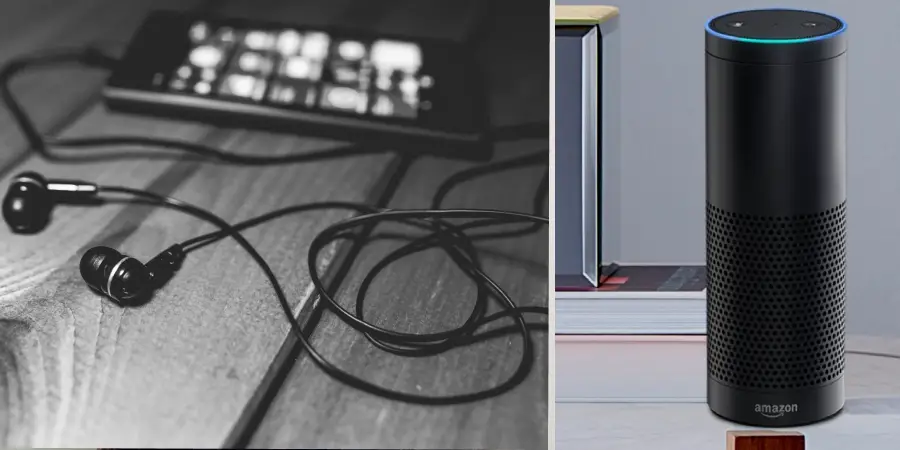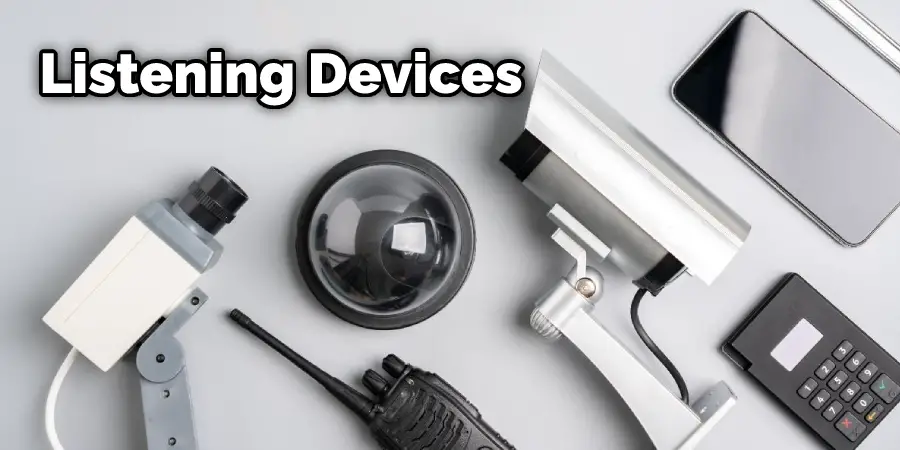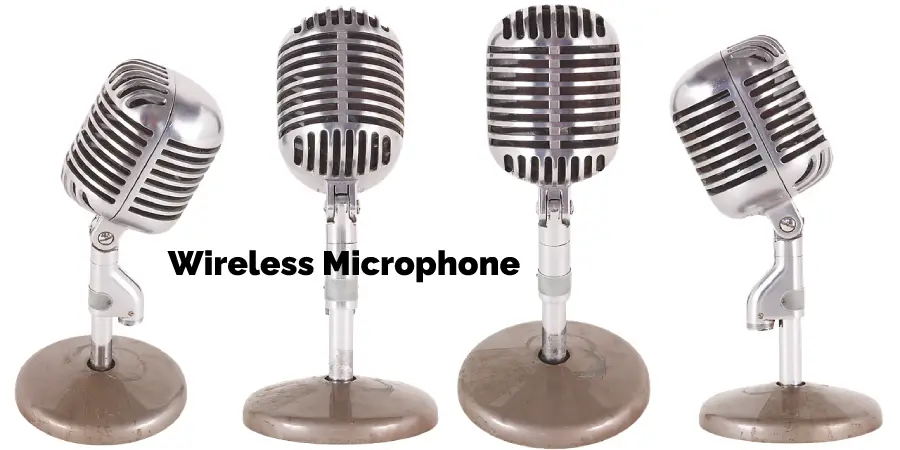Do you suspect someone is listening in on your conversations? Do you feel like eyes and ears are everywhere, trying to spy on what you do? The truth is, it’s not just paranoia—there could be devices out there that are meant to eavesdrop. But don’t worry; you can take steps to protect yourself from these listening devices.

In this article, we’ll show you how to block out listening devices so your private conversations stay private. We’ll cover the different types of listening devices, how they work, and some effective ways to block them out. With our tips, you can ensure no one hears what’s being said in your home or office! So, keep on reading about how to block out listening devices.
Why You Need to Know how To Block out Listening Devices
In today’s world, knowing how to block out listening devices is more important than ever. As technology becomes increasingly sophisticated, so too do the methods of surveillance that can be used to breach your privacy.

You never know when someone is recording your conversations or trying to access data on your electronic devices, so you must educate yourself on ways to protect yourself. Knowing how to block out listening devices is a must to stay safe and safeguard your personal information, communications, and private life. It’s time to take control and keep snoops away from getting their hands on your data!
Different Types of Listening Devices and How They Work
There are different listening devices, each with advantages and disadvantages. Here are some of the most common ones:
Parabolic Microphone:
This device uses a parabolic dish to collect and amplify sound waves from a specific direction. It can pick up sounds from hundreds of meters away but is also very bulky and conspicuous. It is usually mounted on a tripod or a vehicle and requires a power source, headphones, or recorder.
Laser Microphone:
This device uses a laser beam to detect the vibrations of a window or a wall caused by sound waves inside a room. It can capture sounds from a long distance without entering the room but is also very expensive and sensitive to interference. It requires a laser transmitter, a receiver, and a recorder to work.

Contact Microphone:
This device uses a small sensor that attaches to a surface and picks up the vibrations caused by sound waves. It can capture sounds from inside walls, pipes, or other objects but is also very limited in range and quality. It requires a power source and a recorder to work.
Wireless Microphone:
This device uses a transmitter and receiver to wirelessly send and receive sound signals. It can be hidden in various objects or worn by a person, but it is also vulnerable to detection and jamming. It requires batteries and a recorder to work.

Gsm Bug:
This device uses a SIM card and a cellular network to transmit sound signals to a phone or a computer. It can be placed anywhere with cellular coverage, but it is also traceable and illegal in some countries. It requires a SIM card, batteries, and a phone or a computer to work.
These are some of the different types of listening devices and how they work. However, you should also be aware of the legal and ethical implications of using listening devices, as they may violate the privacy and rights of others.
What Types of Devices Are Commonly Used to Spy on People’s Conversations
It is unsettling to think that in this day and age, someone could be listening in on our private conversations. Unfortunately, technological advances have made it so that many types of devices are used to spy on people’s conversations.
Bugs or recording devices can be hidden anywhere; for example, microphones are installed into smoke detectors so that the conversations of unsuspecting individuals can be recorded from far away.
Furthermore, other invasive measures might include tracking particular devices with GPS technology or placing cameras inside a given environment. Even though it may seem extreme and sinister, these types of spying devices are frequently used for various reasons – malicious or not.
Signs that Listening Devices Are Spying on You
No one wants to be spied on, and unfortunately, it happens. But how can you tell if someone is listening in on your conversations? Here are a few signs that indicate listening devices may target you:
1. Unusual Interference on Your Phone Calls:
If your phone calls have unusual interference or static noise, it could be a sign of someone listening in on your conversations.
2. Unusually High Electricity Bills:
If you notice that your electricity bills have been unusually high, it may mean someone is running an audio surveillance system nearby. The more powerful the device is, the higher the bill will be.
3. Strange Noises Coming from Your Walls:
If you hear strange noises coming from your walls, it could be a sign that someone is using a contact microphone to listen in. Contact microphones are placed on walls or other surfaces and pick up the vibrations caused by sound waves.
4. Unusual Activity on Your Network:
If you notice unusual activity on your home or office network, it could be a sign that someone is using a wireless microphone to listen in. Wireless microphones transmit sound signals through the air, so if someone uses one, it will show up as traffic on your network.
Awareness of these signs can help protect yourself from being spied on.
Step-By-Step Guide on How to Block out Listening Devices
Step 1: Identify Any Suspicious Listening Devices
Check for signs of tampering on windows, walls, or other surfaces, and be sure to inspect electronic equipment for any additional components that may have been installed. If you suspect that a listening device has been placed in your home or office, contact the authorities immediately.
Step 2: install Anti-Listening Devices
You can purchase various anti-listening devices, such as jammers and scrambled, to block out any transmissions from nearby listening devices. Be sure to install the devices in a way that will not interfere with any of your electronics or wireless networks.
Step 3: Cover Vulnerable Areas
Covering vulnerable areas such as windows, walls, and pipes can help prevent sound waves from entering or exiting the premises. You can use acoustic foam or other materials to dampen sound vibrations and keep your conversations private.
Step 4: Change Your Habits and Routines
Listening devices are often used to track people’s habits and routines. You should be aware of your behaviors in public spaces and try to vary them as much as possible. Be sure to limit the information you share in conversations with strangers or acquaintances.
Methods on How to Block out Listening Devices
1. Audio Jammer
An audio jammer is a device that emits a loud and random noise that interferes with the microphone of a listening device. It makes your voice unintelligible and prevents the device from a recording or transmitting clear audio.
You need to locate the listening device with an RF detector to use an audio jammer. An RF detector is a device that can detect radio frequency signals from other devices. You can buy an RF detector online to scan your room for hidden listening devices. You need to turn off any wireless devices, such as your router and smartphone, before using an RF detector.
Once you find the listening device, place the audio jammer near it and turn it on. The audio jammer will create a loud and random noise that will mask your voice and make it impossible for the listening device to capture or transmit any useful information.
2. White Noise Generator
A white noise generator is a device that produces a constant and soothing sound that covers up any background noise. It is often used for relaxation, meditation, or sleep. However, it can also be used to block out listening devices.
A white noise generator works by creating a sound similar to a fan, a waterfall, or a rainstorm. This sound is so broad and uniform that it drowns out any other sound in the environment. It makes your voice blend in with the background noise and reduces the chances of a listening device picking up your conversation.
To use a white noise generator, you need to place it in the room where you want to have a private conversation. You need to turn it on and adjust the volume so that it is loud enough to cover up any other noise in the room. You also need to make sure that you speak quietly and close to the person you are talking to.
3. Mobile Microphone Blocker
A mobile microphone blocker is a device that plugs into the headphone jack of your smartphone and disables its microphone. It prevents your smartphone from a recording or transmitting any sound through its microphone.
A mobile microphone blocker is useful because smartphones are one of the most common listening devices. Someone can hack into your smartphone and use its microphone to listen to your conversations remotely. They can also install spy apps or malware on your smartphone that can activate its microphone without your knowledge.
To use a mobile microphone blocker, you need to plug it into your smartphone’s headphone jack whenever you are not using it for calls or voice messages. You must keep it plugged in until you want to use your smartphone’s microphone again.
Conclusion
Learning to block out listening devices is essential in protecting your privacy. You need to be aware of the signs that indicate a listening device may be present and take steps to protect yourself from its potential danger. Following these methods will help you keep your conversations safe and secure. Just remember to be vigilant and take precautions whenever necessary. Thanks for reading our post about how to block out listening devices.
